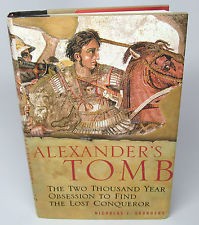British archaeologist Nicholas J. Saunders, author of “Alexander’s Tomb” in 2006, has joined the speculation game and added his voice concerning the burial mound at ancient Amphipolis. He agrees with archaeologists, stating that the tomb that has gathered worldwide attention is unlikely to be Alexander the Great’s tomb.
Alexander the Great’s body may have been destroyed. It could have been mummified and parts of it may have been given away. Surely a part of the great warrior king would have been considered a great talisman in the ancient world.
Though he considers it unlikely that the grave belongs to the great warrior king he does believe it is plausible that it may have been designed and prepared for him because his body was initially being transported to Macedonia before it was transferred to Egypt. Saunders considers that it would have been more probable that Alexander would have been buried in the family grave of Vergina if he were to have been returned to the land of his origin to be buried. “I consider it more likely that the burial mound belongs to a high-ranking comrade,” he says. “Perhaps it belongs to Nearchos, the chief of his fleet.”
Apart from Nearchos he also considers Roxanne, Alexander’s son and his sister Cleopatra as other prospective owners of the tomb, however he points out that the ancients had a different way of thinking and more than likely we will be surprised and find the unexpected.





































